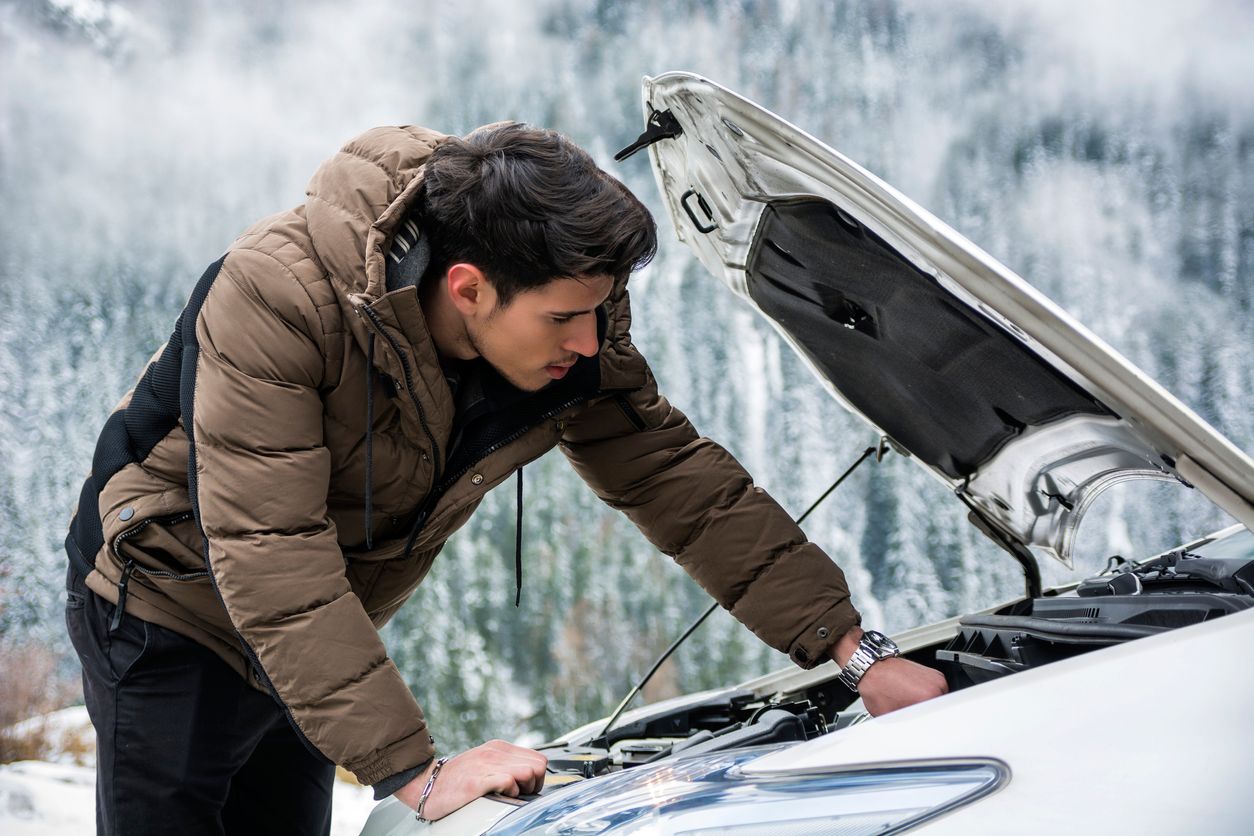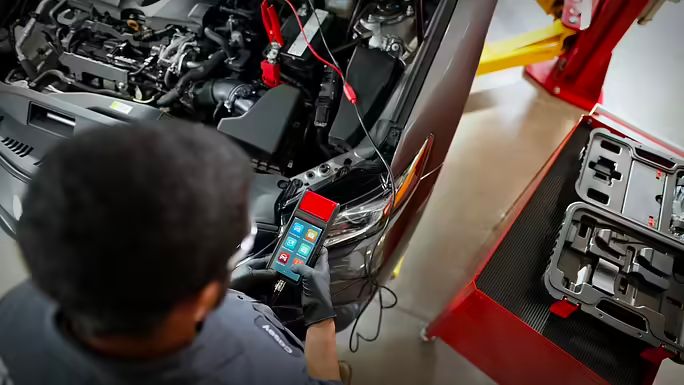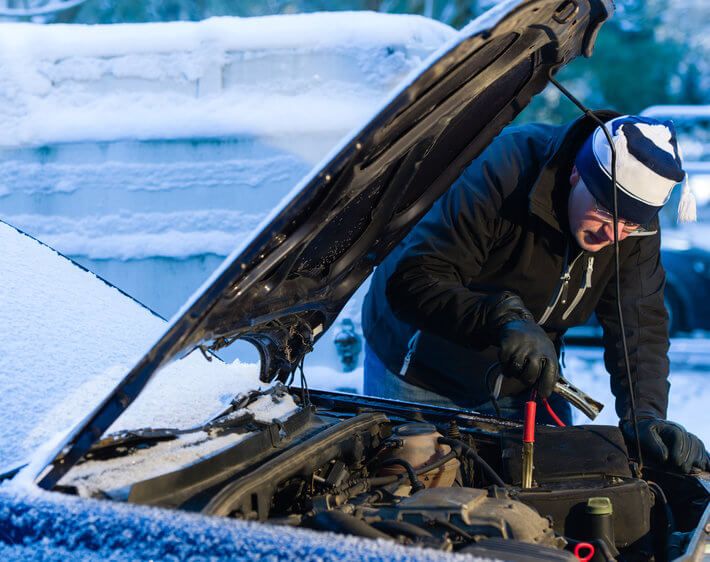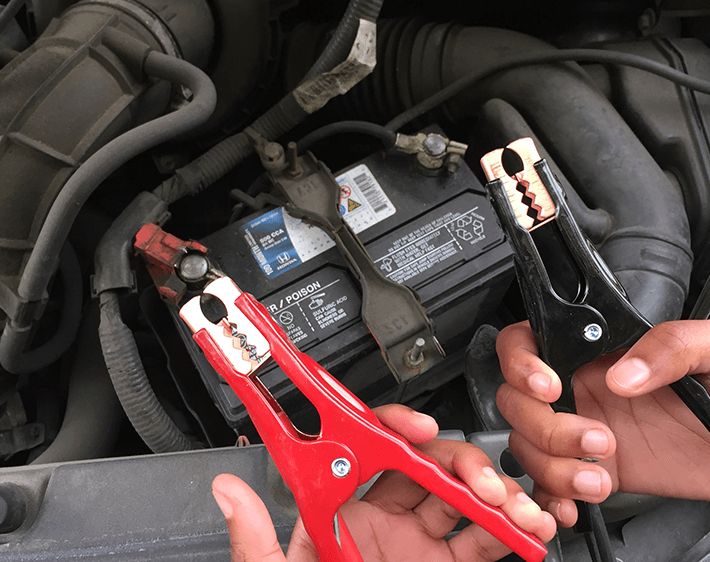It’s no secret that cold temperatures affect car batteries, and learning how to prevent car battery drain could mean the difference between a successful commute and getting stranded in the cold. Before your battery dies this winter, read on to understand why cold weather drains batteries, how to prevent your car battery from dying in the cold, and more.
4 Cold Weather Issues That Cause Car Battery Drain
What is it about the cold that affects batteries so much? It’s all about the chemical reaction happening inside. The lower the temperature gets, the slower this reaction becomes and the more capacity your battery must provide in order to start your car. In fact, most batteries lose about 20% of their normal capacity around 32°F, and it only gets worse when you go below freezing!
That’s why it’s important to make fall battery checks a regular part of your scheduled maintenance. Then, when the cold does arrive, you’ll be better prepared to handle these four cold weather battery issues:
1. Reduced Battery Capacity
Your battery needs to produce a certain amount of energy to both activate the starter motor and crank the engine. And because the rate of reaction in batteries is slowed so much in cold temperatures, the starter motor requires a much higher capacity to successfully crank the engine. In other words, cold weather makes the battery work harder.
If your battery was already old to begin with, chances are it simply won’t be able to provide enough capacity to get your car started in the cold. This is where a battery with high cold cranking amps (CCA)—like the DieHard Platinum—comes in handy.
2. Reduced Recharge Rate
The battery is responsible for starting your car and running essential accessories. But once the engine is on, the battery hands the reins over to the alternator. The alternator powers your vehicle’s electronics while driving and recharges your battery so that your car starts the next time you go for a ride. However, cold weather can slow down the recharge rate of your battery, which means the alternator requires more time to charge it.
3. Thicker Engine Oil
This one is pretty simple: colder temperatures can lead to thicker engine oil. Engine oil needs to flow smoothly in order to turn over your engine. But when it’s super cold out, the oil flow can be thicker and more viscous, putting added strain on your battery and making it work harder to crank the engine.
4. Increased Power Demand
Your battery doesn’t just crank the engine. It also powers numerous accessories — especially in winter. From the heater and defroster to windshield wipers for better visibility, these extra accessories can increase power demand, making the battery’s recharge rate longer.
Though not strictly a cold-weather issue, your battery may also be suffering from parasitic drain, one of many things that can quietly drain your battery. Parasitic drain occurs when an electronic component in your vehicle continues to draw power from the battery when the car is off.
This drainage can be caused by something as obvious as an interior light left on or something much harder to detect, like a faulty alarm circuit. Add up all these extra power demands, and it’s not surprising that many people end up with dead batteries when the first cold snap hits.
How to Help Keep Your Car Battery From Dying in Cold Weather
Discharging past a certain threshold can cause the battery to not start your car, while repeated deep discharging can cause permanent damage to the battery. Thankfully, there are many ways to help prevent your car battery from experiencing cold-related deep discharges. Doing any or all of the following suggestions will go a long way in keeping your battery alive and well throughout winter.
Drive Regularly or For Longer Distances
With an already slow recharge rate due to the cold, it’s essential that your alternator has enough time to fully recharge your battery while you drive. Therefore, it helps to drive your car regularly during winter months and for longer distances.
Avoid Short Trips
While it may be tempting to run your errands as quickly as possible during winter, short trips don’t give your battery enough time to recharge efficiently. And since starting your car requires so much energy from this component, frequent short trips end up discharging your battery without as much chance for a recharge. All of which can result in a dead battery.
Turn Off & Unplug Accessories
If you’re having trouble starting your car in the cold, try turning off nonessential accessories like seat warmers and the radio to reduce the load on your battery. Be sure to unplug things like phone chargers as well, if appropriate, as these can further split your battery’s energy use and even be a source of parasitic drain.
Keep Your Car in a Garage
One of the simplest things you can do to protect your battery is to park your car in a garage or other indoor space. Shielding your battery from the cold winter wind can help prevent it from becoming colder than necessary and therefore lose less capacity.
Keep Battery Terminals Clean
Car battery corrosion isn’t just unappealing to look at, it can also have a serious effect on your battery’s performance. This flaky buildup actually increases electrical resistance between the connections, making the battery work harder. In the winter, making your battery work any harder than it has to might result in a battery that doesn’t work at all.
Regularly Test Your Battery
Depending on usage — plus external factors like climate — a typical battery will last anywhere from two to five or more years. Testing your battery can help you determine if it’s strong enough to handle winter temperatures or if it’s time to get a battery replacement. If you’re unsure of the condition of your battery, you can always test its charge for free at your local Firestone Complete Auto Care.
Invest in a Better Battery
If you know your battery has gone beyond the average battery lifespan and you'll be driving in cold temperatures, it may be time to invest in a newer, better battery. Extreme temperatures in general put a lot of strain on your battery, so you want one that can keep up across a wide range of conditions.
Batteries with high cold cranking amps (CCA) — like the DieHard Platinum AGM — help to supply more power to your vehicle, even in extreme cold. Not only can they last up to twice as long as standard flooded batteries, but they're also equipped to withstand heavier use from high-demand accessories like heated seats and navigation.
Use a Battery Charger
Battery chargers are a smart option to protect your battery from deep discharges this winter. They're especially useful if you intend to keep a car in storage or not use it for an extended period of time. Battery chargers, like a trickle charger, supply your battery with just enough power to offset its discharge rate while not in use.
Still dealing with cold-weather battery issues? Call on Firestone Complete Auto Care for battery replacement and installation no matter where you are. Book your appointment today!



